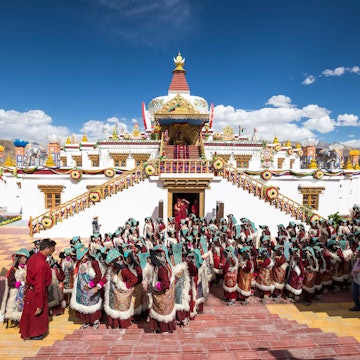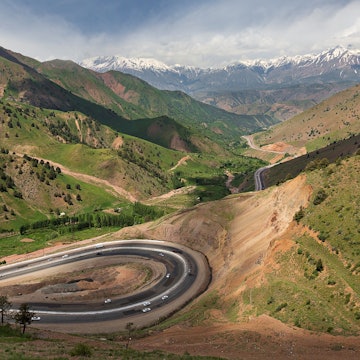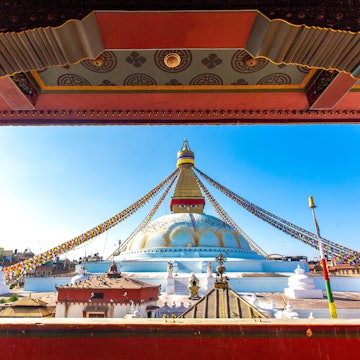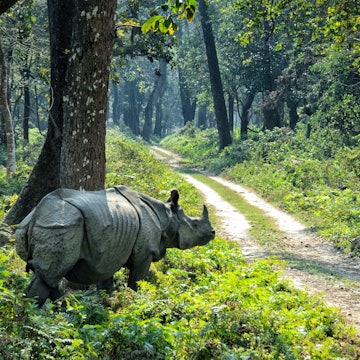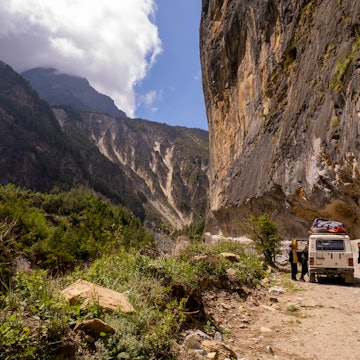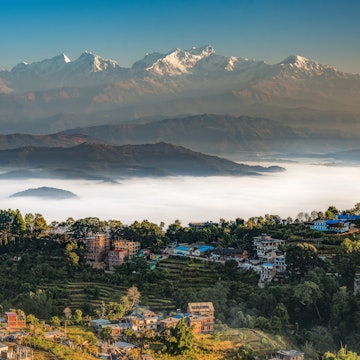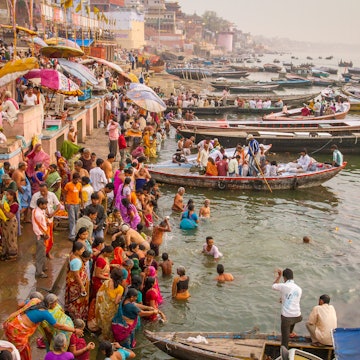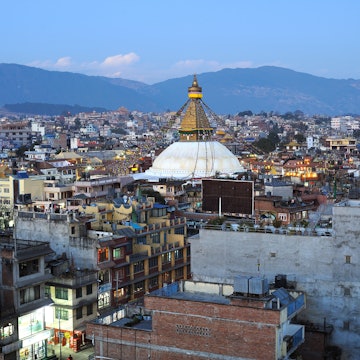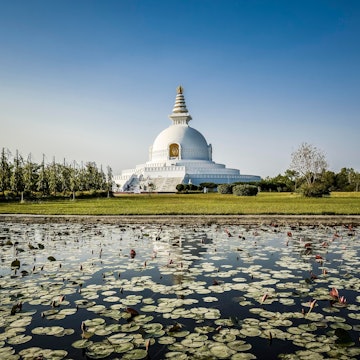
Highlights of the Seven Sisters: why Northeast India is the place to travel right now
Oct 10, 2019 • 9 min read

Gangtok, perched amidst the green mountains, is one of India’s most laid-back cities and is a joy to explore. saiko3p / Getty Images
Of the countless pictures you’ve seen and travel tales you’ve heard of India, it’s unlikely many – if any – focused on its remote Northeast States. This triangular-shaped piece of land is wedged between China, Bangladesh, Bhutan and Myanmar, and consists of seven states, known collectively as the Seven Sisters. Long neglected by even the most intrepid of travellers because of their notoriously troubled past, the Sisters have slowly come of age, and may soon grow into India’s most sought-after travel destination.
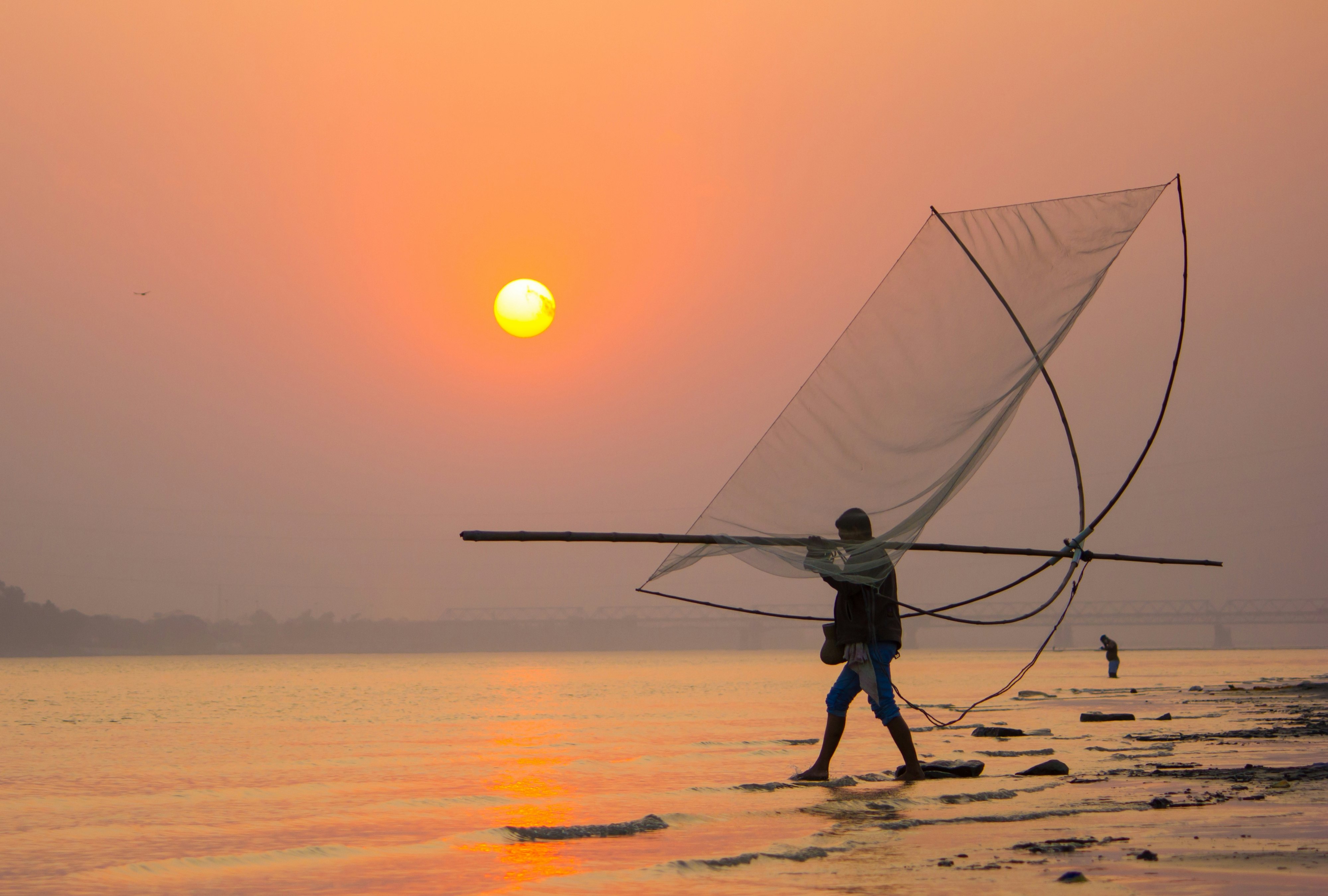
Home to a kaleidoscope of cultures, religions and ethnicities, the region has endured a turbulent history (think tribal warfare, independence struggles and cross-border smuggling). However, much of the outright conflict has subsided – apart from the occasional peaceful protest – and, as a result, the Indian Government has recently relaxed most of the travel restrictions and permit requirements for foreigners, meaning the region’s pristine nature, diverse landscapes and unique tribal cultures are open to the world for the first time.
From Himalayan monasteries to rhino-filled national parks, here are seven of the highlights of India’s Northeast – just make sure you see them before everyone else does.
Loktak Lake, Manipur
Manipur was considered the most dangerous of the seven states as its fierce independence movement and forested hills favoured by smugglers prolonged the region’s instability. However, the locals will repeatedly assure you those days are long gone, and foreigners are welcomed with eager hospitality.
Loktak Lake, one of the largest inland bodies of water in India, is one of the most memorable highlights of the Northeast States. Just an hour from Manipur’s capital, Imphal, the landform is known as the ‘floating lake’ due to the presence of phumdis, large masses of vegetation that float on the lake’s surface. One of these buoyant islands is so big it’s been granted national park status, set up to protect the endangered sangai deer, which at one time was thought to be extinct. The park has a couple of viewing platforms where rangers will help you locate the deer through binoculars. Alternatively, it’s possible to spend time out on the water in wooden boats with local fishermen (many of whom live on the phumdis), who can provide insights into traditional fishing methods and details about the lake’s 100 species of birds.
It’s possible to stay in a village homestay on the lake run by the local ecotourism committee. Alternatively, there are also accommodation options in Moirang, the largest nearby town.

Tawang, Arunachal Pradesh
Arunachal Pradesh is the last frontier and eastern most state of India, sharing borders with Tibet, Bhutan and Myanmar. It’s the most precarious of the Seven Sisters, due to the heavily militarised nature of the area and the ongoing border dispute between China and India. For this reason, it’s one of only two states in the region – the other being Sikkim – where a Protected Area Permit is still required for foreigners. However, it can be easily arranged in Guwahati or Kolkata from government offices.
Arunachal is characterised by an impressive mountainous region that rises to the Greater Himalayas. Tucked inside these snow-capped peaks between Bhutan and Tibet, is the town of Tawang. This little-visited spot is home to the second largest Buddhist monastery in the world, spectacularly set on the edge of a slope at 3000m elevation. The monastery dates back to around the mid-17th century and is where the sixth Dalai Lama was born. It’s now home to around 300 monks and a treasure trove of Tibetan Buddhist relics, including rare manuscripts and thangka cotton paintings.
The real highlight, aside from the incredible scenery surrounding the monastery, is to spend time mulling around the peaceful, white-washed grounds, which are most atmospheric at sunrise when the monks perform their morning prayers, or puja, to the sound of beating drums.
Majuli Island, Assam
Assam is the largest state in the region and perhaps the most well-known thanks to its production of its namesake tea. It’s lesser-known tourism marvel is Majuli, the world’s largest river island marooned in the mighty Brahmaputra River.
The island is home to some of the most important temples and satras (cultural centres) of the neo-Vaishnavite sect of Hinduism, which is native to Assam. More than just complexes for prayer, they are also used for traditional performing arts that includes elaborate and colourful masks which are handmade on the island. Majuli once had 65 of these satras, however, due to the slow erosion and seasonal flooding of the Brahmaputra River, the number has been reduced to just 22.
The large landmass is also home to the Mishing tribe, an indigenous community with roots in Mongolia who migrated to India in the 16th century. Their houses sitting high on stilts are traditionally made from bamboo and thatch, almost blending into the thick vegetation found on rural parts of the island. The community are extremely affable – don’t be surprised to find yourself being invited into a stilt-house for tea.
Konyak villages, Nagaland
The Seven Sisters are often referred to as tribal states, and, in this context, Nagaland is the region’s poster child. The Nagas is the collective term for around 20 tribes, but each has its own traditions and customs and occupies a different area of land. The largest of these tribes is the Konyaks, mostly situated in the north of the state, around the town of Mon.
The Konyaks are unique for their headhunting traditions. Not so long ago, territorial disputes in the area that is now the India-Myanmar border culminated in the practice of decapitating enemies and displaying their heads as trophies on door frames. These ruthless days are a thing of the past, but remnants of this time endure, most notably in the form of body art; ex-warriors – now in their twilight years – can still be distinguished by their tattooed faces and chests, a decorative practice used to honour their achievements in battle.
Although there are a couple of hotels in Mon where you can base yourself for village visits, a more immersive experience is to opt for a homestay with a Konyak family. The village of Longwa has a number of such accommodation options available, with hosts often doubling as guides. Staying in the village itself not only gives you more of a chance to meet some of the former headhunters, but also provides a window into everyday village life, as well as the opportunity to sample some memorable home-cooked meals, like smoked beef heart served with local red rice.
Neermahal, Tripura
One of the smallest and least visited states in the country, Tripura is bordered on three sides by Bangladesh and to the north with Assam. Though it remains a relatively isolated state, it is connected to the country’s national railway network – a rare feature in the Northeast States.
The state’s most picturesque attraction is Neermahal, which literally translates to water palace. The former royal fortress was built in the 1930s in the middle of the lake by the Maharaja of Tripura and is considered a unique blend of Muslim and Hindu architectural design. To reach it you need to take a wooden boat from the small dock, which is walking distance from the town of Melaghar.
The palace appears like something you might find on the opposite side of the country in Rajasthan, except the pure joy of visiting Neermahal is that you will likely have the place all to yourself. Although the rooms are mostly empty now, you are free to roam around the complex and admire the view of the lake from various vantage points. The palace is particularly striking at sunset, when the marble domes are splashed in a golden hue.
Gangtok, Sikkim
Sikkim is a former mountain kingdom, bordered by Bhutan, Tibet and Nepal, and features some of India’s most impressive mountains vistas and trekking opportunities. It’s the least populated state in the country and one-third of its area is covered by the Kanchenjunga National Park to the north.
And for all this natural splendour, it is Sikkim’s urban charms that steals the show. The state’s capital, Gangtok, is one of India’s most laid-back cities and is a joy to explore. The majority of the population have origins in Nepal and Tibet, and you will find typical Himalayan delights such as momos (dumplings), thukpa (noodle soup), yak wool shawls and thangka paintings in the open-air market in the city centre. You can explore Gangtok’s Buddhist culture further by visiting some of the city’s nearby monasteries such as Rumtek, which is the largest in Sikkim.
The state is extremely mountainous and the sprawl of Gangtok laps against the slopes of the surrounding hills. There are a few lookout points around town, the best of which is considered to be Tashi Viewpoint, where you can gaze at the impressive mountain backdrop of the city which, on a clear day, extends all the way to Kanchenjunga, the world’s third-highest mountain.
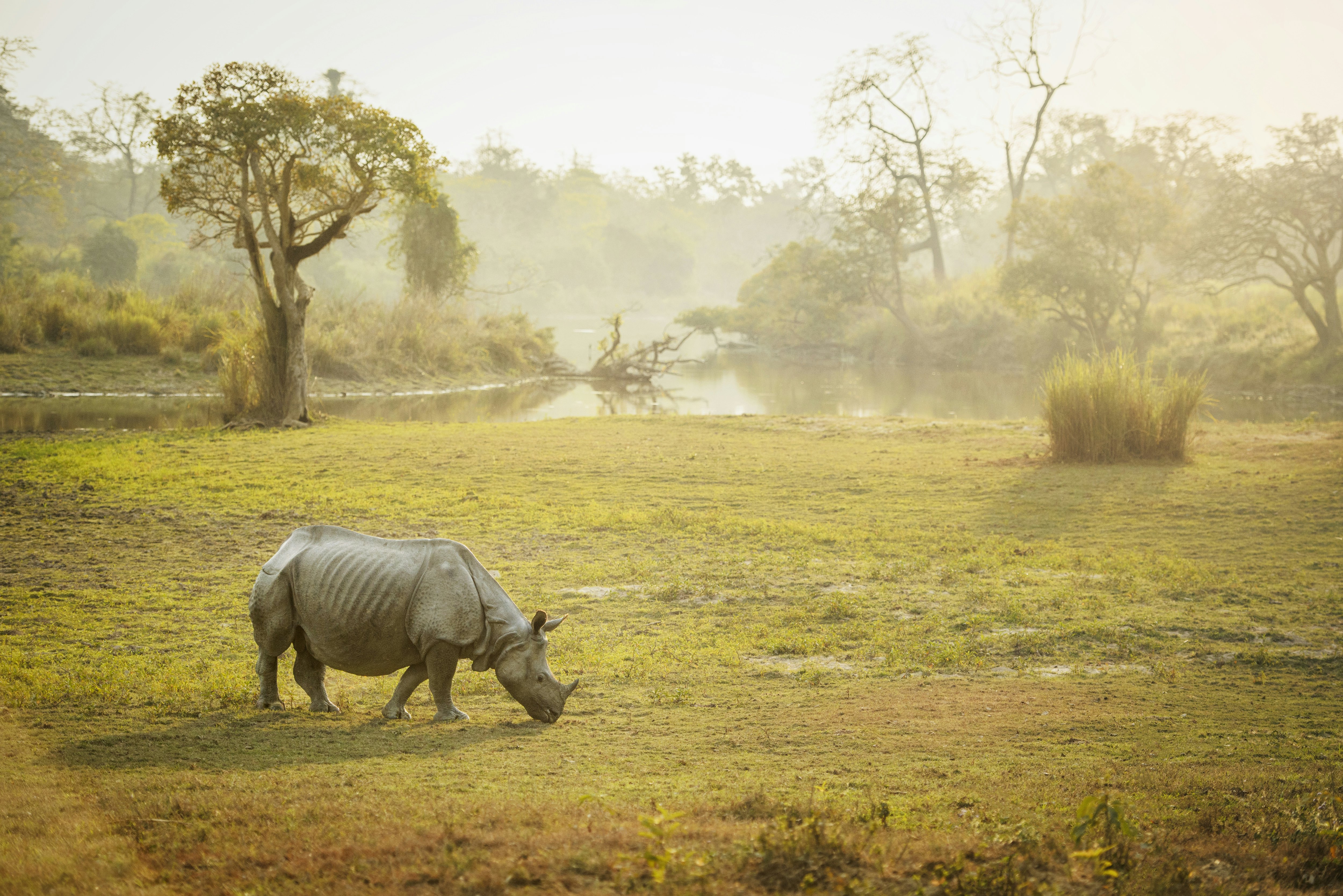
Kaziranga National Park, Assam
The Seven Sisters are known for their vast natural landscapes, and the forest and floodplains of the Karizanga National Park are considered – remarkably – to be one of the last areas on the Indian subcontinent that is undisturbed by human settlement. Its place as a wildlife haven has been recognised for over a century, which has allowed tigers, elephants and one-horned rhinoceroses to flourish amongst the wetlands of the Brahmaputra River. It’s home to two-thirds of the world’s population of rhinos and sighting them grazing in the grass is highly likely, even on a short visit.
As with the more famed national parks in India, a jeep safari is the most common way to explore the park. The reserve is divided into five sections, with the well-maintained tracks of Kohora being the most popular and busy. Agoratoli is perhaps the best alternative, with much less traffic while retaining a high chance of animal sightings.
Some of the most famous photos of the park are of tourists on elephant-back safaris. Although the creatures are reputedly well cared for by rangers, in the interest of animal welfare it is highly recommended to explore the park on four wheels instead. There are numerous lodges ranging from high end resorts to budget camps on the outskirts of the park, which can arrange half-day safaris from their doorstep.

Getting around
The remoteness and somewhat isolation of the Northeast region of India does pose certain barriers to those wishing to explore its far corners. Tourist and transport infrastructure is fairly limited and often, not in great shape. However, there are significant improvements planned for the future, which will only make travel easier.
The capital of Assam, Guwahati, is the region’s major transport hub and you’ll likely find yourself revisiting multiple times for connections between places. For now, it’s home to the region’s only international airport and it’s connected by flight directly to seven countries, all of which are in Asia. Guwahati also has the region’s main interstate railway station with services to most other major cities in Northern India.
Besides Tripura and Assam, the rest of the Seven Sisters do not have an existing rail network and must be explored by either state government buses or private and shared jeeps. This can pose some obstacles to travel plans as the mountainous region and poor road conditions, particularly in Arunachal Pradesh and Nagaland, make travelling between places long and arduous. However, jeeps are abundant, relatively well organised and will go virtually anywhere, so with some time and patience the rewards are boundless.







